Last weekend, I was in a nice family gathering over dinner. Naturally, the table was filled with gentlemen close to my age jokingly asking if they could get a transplant done to save their thinning hairline.
Of course, I confidently answered that with the right steps, it is always possible to bring back a youthful look. They were interested but had some concerns. Mainly, their issue was the fear of experiencing problems and making the situation worse.
In my years of practice, I have always seen this same primary concern rise whenever a patient learns of a hair transplant but does not know that any potential problems it can cause are easily avoidable.
Now, I have two relatives coming to the clinic to start the process, and I thought I could share the same feedback that I shared with them so that you can know the effective ways of fixing hair transplant problems.
In today’s article, I will go over each hair transplant problem one by one and immediately afterward provide you with solutions on how you can prevent or fix them:
Table of Contents
Without further ado, let’s go over the issues and see how you can resolve them before or after:
There Are 11 Common Hair Transplant Issues in 2024
I will go over each issue or potential problem one by one and immediately provide options for prevention or intervention afterward.
Starting with the most common one:
1. Infection and Bleeding in Hair Transplant
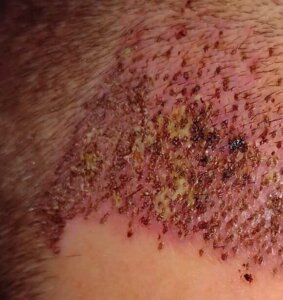
As with any surgical procedure that includes skin penetration, there is a minor risk of infection and bleeding.
In hair transplantations, only 1% of patients develop infections following the surgery.
The top signs of a hair transplant infection are redness and discoloration on the scalp, swelling, drainage, burning, and an itching sensation.
In a crushing majority of cases, these infections are mild and can be easily treated and even prevented.
Here’s how:
How to Avoid Infection and Bleeding:
There are two approaches you can use to minimize the potential for infection.
You can prevent it: Use antibiotics before and after surgery while ensuring that your chosen clinic provides a sterile environment during the procedure.
You can treat it: Go for immediate treatment with antibiotics if an infection occurs, and manage bleeding with proper wound care, as your doctor would explain.
⚠️ Remember, no matter how mild it may seem at first, do NOT ignore the signs and seek medical opinion immediately.
If the infection goes untreated for a long time, it can spread deeper into your scalp tissue or bones, causing further diseases that could prove vital, such as septicemia.
It is always better to be safe than sorry.
2. Scarring
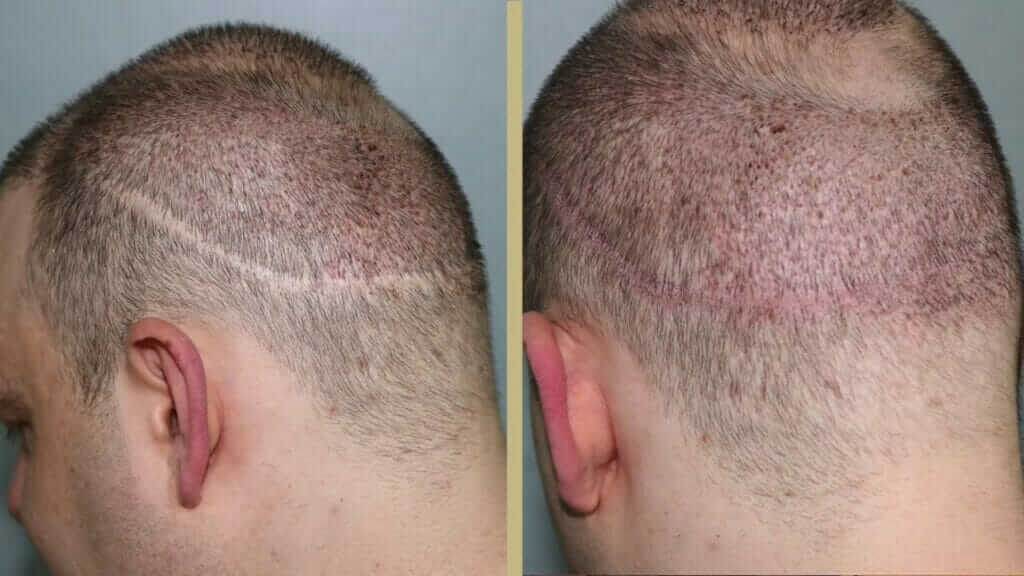
Each hair transplant involves some amount of natural scarring due to surgery.
Numerous clinics and physicians are promoting their services as “scar-free nowadays.” That is simply NOT true.
In 2024, no hair transplant surgery is “scarless.”
However, you can control how visible it will be and how quickly it will be hidden under your hair with the right approach.
Here’s how:
How to Avoid Scarring:
You can prevent it: By choosing advanced hair transplant techniques like Follicular Unit Extraction (FUE), you can minimize scarring. Older methods, such as Follicular Unit Transplantation (FUT) (which involves removing a strip of tissue from the scalp directly), leave a more visible scar in comparison.
You can treat it: If you want to hide it further, treatments like laser therapy for scar reduction can be an option. Also, planning the hair transplantation strategically to cover scars can help.
3. Folliculitis
Folliculitis is an inflammation of the hair follicles, which can occur when new hairs begin to grow. It’s usually mild, but in the case of worse scenarios, we have several options for treating it.
Here’s what you can do:
How to Avoid Folliculitis:
You can prevent it: If you keep your scalp clean and regularly use medicated shampoos post-surgery, the chances of experiencing folliculitis reduce dramatically.
You can treat it: Despite how rare the chances are, if you still end up experiencing folliculitis, do not worry. By simply using antibiotic treatments or topical creams, you can reduce the effects of the inflammation.
4. Shock Loss
Hair transplantation is a process that puts heavy physical stress on your scalp.

Naturally, the trauma can cause you to experience a temporary loss of the transplanted hair. The hair grows back, but we also have options for preventing the stress it can bring you.
Here are your options:
How to Avoid Shock Loss:
You can prevent it: Consultation and being informed are always critical points of communication with your doctor. By learning more about the process from your doctor, you can get a chance to manage the overall stress better.
You can treat it: Maintaining your scalp’s optimal health to support regrowth and using medications like Minoxidil can sometimes be recommended with your doctor’s approval.
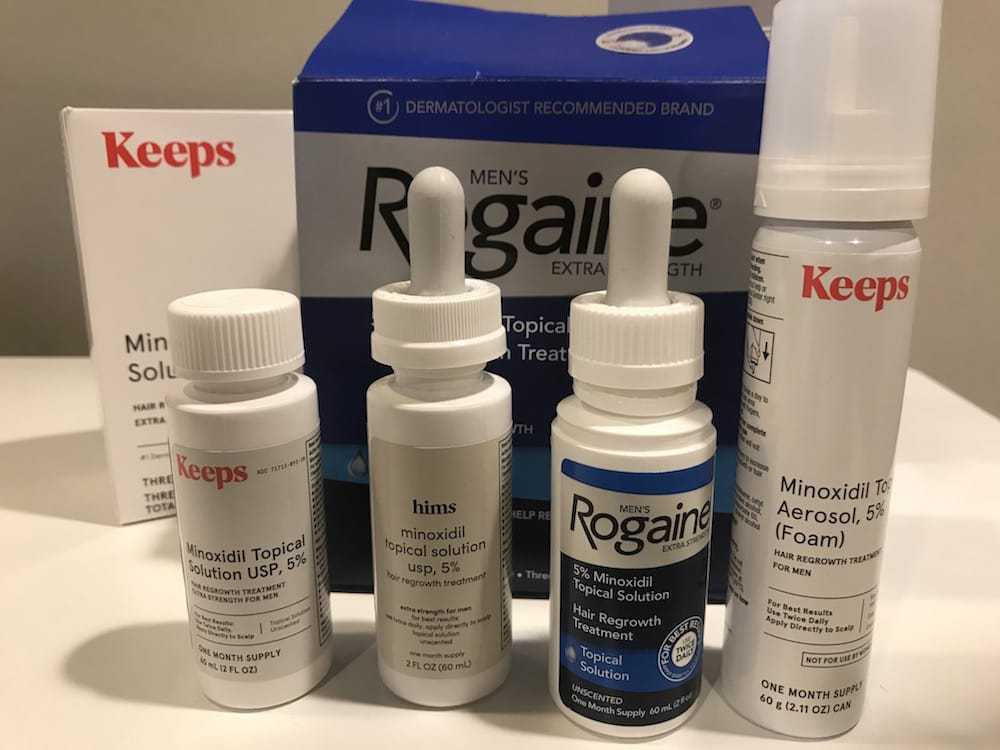
5. Unnatural-Looking Results:
The success of a hair transplant is linked directly to your chosen doctor’s skills. If the hair transplant surgery is not planned and performed carefully, the hair may look unnatural.
This can happen if the hairlines are not correctly planned (causing an uneven look) or the hair density does not match the surrounding areas.
If you also want to hide your hair transplant, these unreliable results can be a changing factor.
To eliminate all these possibilities, you can utilize your options for preventing and treating it:
How to Avoid Unnatural-Looking Results:
You can prevent it: Selecting an experienced surgeon who plans the hairline and density carefully has to be your number one priority.
You can treat it: In the case of an existing unnatural hairline, your options are revision surgeries to adjust the hairline or density for a more natural appearance.
6. Numbness:
Some patients may experience temporary numbness in the areas where hair was transplanted or removed.
It takes a few months for the numbness to entirely resolve. However, waiting is not the only thing we can do.
Here’s what else is possible:
How to Avoid Numbness:
You can prevent it: You can consider communicating with your doctor to carefully limit the size of the transplant area to reduce nerve damage.
You can treat it: Ultimately, once it emerges, you can at least take some stress out of your mind by keeping a regular post-surgery check-in with your doctor.
As patient reassurance is valuable, finding a clinic that provides regular post-surgery communication is essential until numbness resolves on its own within several months.
7. Cysts:
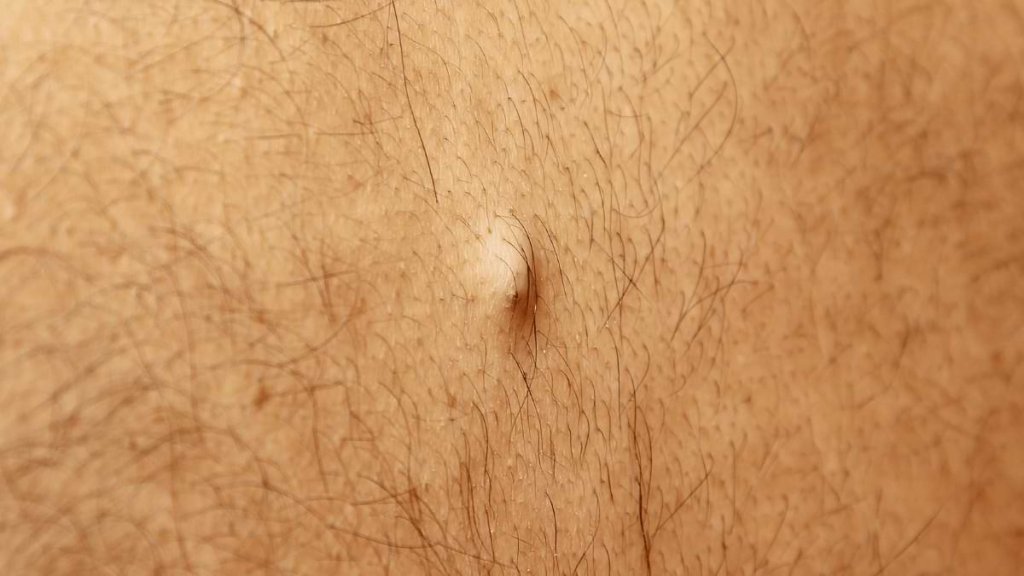
Small cysts are naturally expected to form in the areas where hair follicles were transplanted. These are generally harmless and disappear by themselves but can cause discomfort.
Here’s what you can do to ensure that discomfort disappears as soon as possible:
How to Avoid Cysts:
You can prevent it: By choosing the latest hair transplant technique, you can reduce the chances for cysts significantly with proper handling of grafts and ensuring not too many grafts are placed in a small area.
You can treat it: The post-surgery process is effective in treating treating cysts. By keeping the area clean, you can naturally resolve cysts without intervention. If the usual approach doesn’t help and they are persistent, you should consult about applying drainage.
8. Poor Hair Growth:
In some cases, the transplanted hair does not grow as well as expected.
➡️ This could be due to various factors, including poor graft quality, improper handling of hair follicles, or unsuitable candidate selection.
As such, to deal with poor hair growth, you have to focus on these scenarios in the first place:
How to Avoid Poor Hair Growth:
You can prevent it: Your chosen doctor’s experience skills are crucial. Poor hair growth can be prevented only by adequate donor selection and proper graft handling.
You can treat it: In the case of a failed transplant, finding a clinic or surgeon with a better valuation to identify the causes is your only option. That way, the right doctor can create a potential for a secondary transplant to fix the problem.
9. Graft Failure:
💡 Surgery alone does NOT guarantee that your transplant will stick around.
There’s a risk that the transplanted hair follicles won’t take root to grow and instead be “rejected.” These graft failures can occur due to improper placement, handling, or potential reasons for rejection of the transplanted tissue.
Thankfully, we have methods for dealing with them:
How to Avoid Graft Failure:
You can prevent it: Your chosen clinic must ensure that you are a suitable candidate for a transplant and use meticulous graft placement techniques in accordance with your conditions.
You can treat it: Once again, assessing reasons for failure and considering additional transplantation sessions is your only “after method” of treating them if you can’t prevent them instead.
10. Allergic Reactions:
In rare situations, patients might experience an allergic reaction to the anesthesia or other medications used during or after the procedure.
As these are mostly linked to the used medications, their treatments are pretty easy to apply:
How to Avoid Allergic Reactions:
You can prevent it: The pre-operative testings for any allergies and medications used during the procedure will show what may be harmful to you so that we can avoid them.
You can treat it: In the case of an unforeseen reaction, simply stopping whatever’s causing the allergy and treating it with antihistamines or other appropriate alternatives can save the day.
11. Swelling and Pain:
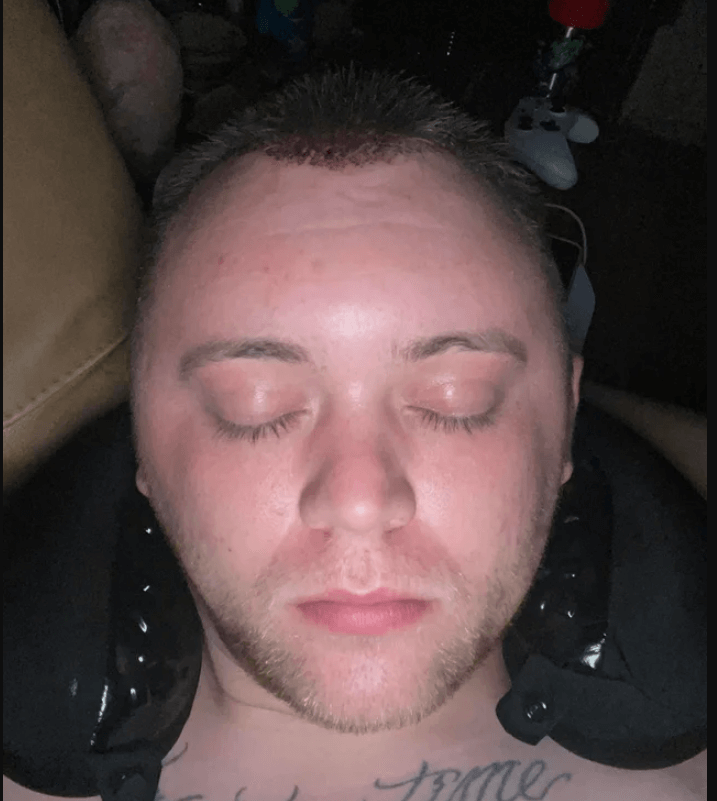
Some degree of swelling and pain is expected after the procedure. However, in rare cases, they can become more severe and require additional treatment.
In such cases, here is what we can do:
How to Avoid Swelling and Pain:
You can prevent it: In accordance with your doctor’s consultation, using mild analgesics and cold compresses immediately after the operation is the first step.
You can treat it: If they get worse, you can also use medications to manage pain and reduce swelling while ensuring that you follow post-operative care instructions.
Ultimately, as you may notice, solutions to most of these problems are directly linked to finding the right clinic…
…the right clinic that provides pre-surgery consultation operates with only the most advanced methods, has a dermatologist surgeon at its site, and keeps in contact with their patients post-surgery.
So, if you want to secure success and ensure that these problems never even occur at all, you have to look for the right clinic with the right conditions:
Securing Success: Strategies to Guarantee a Successful Hair Transplant Outcome
Finding a single, reliable clinic among all the hair mills and fake clinics in the field can be difficult.
What you can do instead is to look for the strategies that will protect your hair from these problems, and if your chosen clinic provides them, then it can provide you with success.
That is why I came up with three essential strategies you can look for in your research:
1️⃣ Find a Dermatosurgeon
❓ Did you know that hair transplantations first began as a dermatology procedure❓
Unfortunately, nowadays, from nurses to non-medical technicians, everybody attempts to perform hair transplant surgery. Only a minority of hair transplant surgeons today are dermatologists.
This minority group of experts is responsible for identifying and treating skin, hair, nail, and cosmetic-related disorders and symptoms.

So, choosing a dermatosurgeon is no different than going to a dentist for your teeth instead of a doctor with no dental education.
When you also consider that your hair transplant’s success lies in the hands of the clinic’s leading doctor, especially during the surgery, finding a dermatologist becomes fundamental.
In short, do not risk your hair’s future; choose an expert.
2️⃣Select Modern Methods, FUE DHI, Bio-enhancements, and Stem Cells
The more we approach the latest technologies in hair restoration, the more potential risks/problems disappear one by one.
And the best part is that nowadays we have a lot of methods you can benefit from separately or even together to increase your chances.
With your doctor’s consultation, of course, you can benefit from:
✅ FUE DHI technique that increases your doctor’s precision during surgery,
✅ bio-enhancements to support your transplant’s growth,
✅ stem cells to support your body’s healing process, and much more.
These are all standalone hair restoration techniques that are already the leading methods in the field, but you can also combine them in an all-inclusive package.
3️⃣ Educate Yourself and Follow Post-Surgery Instructions
Hair transplant is not comprised of surgery process alone.
💡 In many ways, once your new hair is transplanted, you will also be responsible for making sure it stays where it is planted.
In your recovery process, about a year post-surgery primarily, the medications you use and your daily cleaning of the scalp highly affect your transplant’s health.
So, before we can call the transplant a success, first, we have to ensure that you know how to take care of your new, shining hair.
In that regard, the most significant strategy you can apply is seeking out clinics that offer educational post-surgery instructions.
In fact, at UnitedCare, we offer more.
We offer personalized instructions.
With our FREE care assistant app, you can now learn which pre-surgery and post-surgery instructions you should follow to safeguard your hair transplant journey.
When it comes to your health, we do not leave anything to luck. Instead, we guarantee its success by focusing only on your transplant on that day:
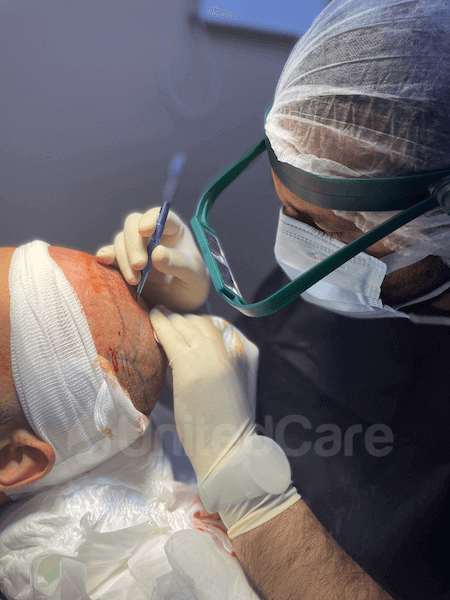
👉 At UnitedCare, we accept only 1 patient a day regardless of the chosen method.
The budget-friendly process begins with a free one-on-one consultation with our expert dermatosurgeons to determine your suitability.
💊 Our holistic approach provides advanced technologies and bio-enhancements to ensure you do not need another surgery.
We use intracellular solutions (a.k.a bio-enhancements), helping cells stay alive for days outside the body. These solutions increase graft survival rates significantly. 💉
Most importantly, our care assistant/patient manager is in contact with our patients even before and after the surgery, ensuring that your transplant becomes permanent. 🍀
Affordable costs, a holistic approach, and experienced dermatologists on-site are here to provide you with the right solution.
Want to learn if you are suitable for a hair transplant? Get a FREE consultation:
Ensure your hair’s safety with the right hair methods.
Secure your natural look with a Dermatosurgeon now:
Frequently Asked Questions (FAQs)
Can a hair transplant be repaired?
Yes, in most cases, regardless of how much your previous hair transplant has failed, there is always a chance for restoration with the proper observation, consultation, and steps.
What to do if a hair transplant goes wrong?
If a hair transplant truly becomes a failure, your priority should be to see how much damage there is on your scalp. Secondly, you should seek out to find a new, better clinic that is actually reliable. And from that point on, with the new clinic’s consultation, you can decide on a method, or a new hair transplant surgery to restore the look.
How often does a hair transplant go wrong?
If you define hair transplant failure as not seeing an 80% or more survival rate in planted grafts, the failure rate for the average hair transplant (traditional FUE or FUT) would be between 5-10%. But, if you define failure as not achieving complete success in desired looks with a single surgery, the failure rate of hair transplant surgeries would be around 43%, according to ISHRS research, which revealed that only 57% of patients achieve their desired results after a single hair transplant operation.

